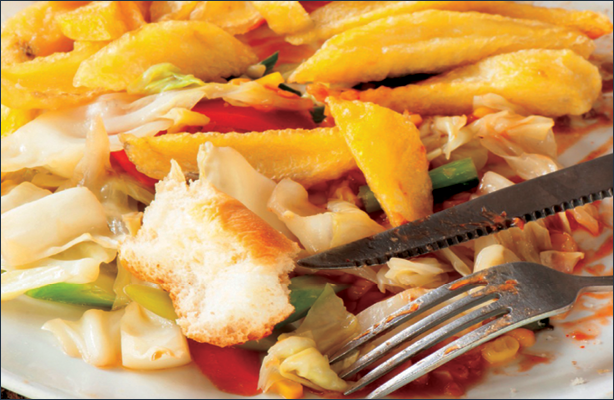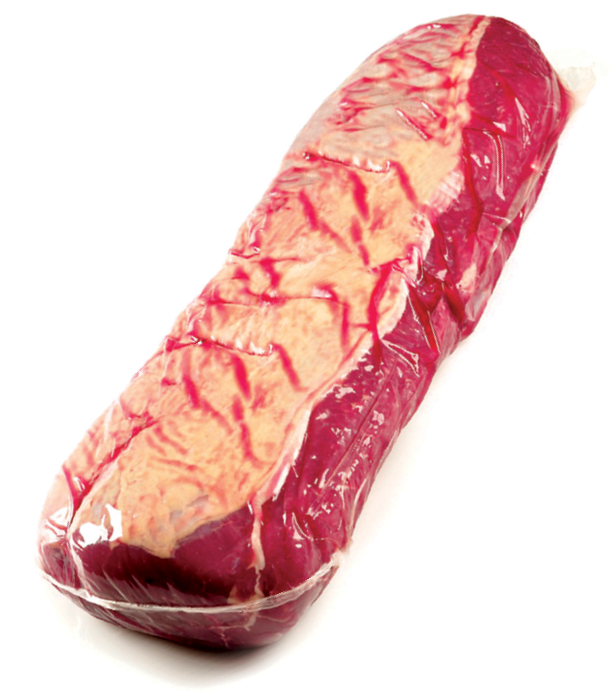How Can Plastics Help Curb Food Waste?
Plastic packaging addresses people’s hatred of waste
Previous Article Next Article
By American Chemistry Council (ACC)
How Can Plastics Help Curb Food Waste?
Plastic packaging addresses people’s hatred of waste
Previous Article Next Article
By American Chemistry Council (ACC)
How Can Plastics Help Curb Food Waste?
Plastic packaging addresses people’s hatred of waste
Previous Article Next Article
By American Chemistry Council (ACC)

The U.S. Department of Agriculture estimates that 30-40% of post-harvest food goes uneaten in the USA

The U.S. Department of Agriculture estimates that 30-40% of post-harvest food goes uneaten in the USA

Plastic vacuum packaging for meat can result in 75% less food waste than store-wrapped meat.

Plastic vacuum packaging for meat can result in 75% less food waste than store-wrapped meat.
Note: This article continues the series of updates in Plastics Engineering from Plastics Make it Possible®, an initiative sponsored by America’s Plastics Makers® through the ACC.
A previous article in PlasticsEngineering (July/August 2015, p. 46) honored recipients of the 2015 DuPont Awards for Packaging Innovation, highlighting the contributions of award-winning plastic packag- ing to sustainability. Many of this year’s winners exemplified the sustained efforts of those in the plastic packaging supply chain to diminish their environmental footprint.
The results of these efforts today can be measured in life-cycle studies that demonstrate that lightweight plastic packaging typically uses less material than alternatives, which results in less packaging waste and energy use and produces fewer greenhouse gas emissions. Studies today also find that packaging can be part of the solution for reducing food waste by helping prevent food spoilage and ensuring food quality and safety along the supply chain and at home.
Despite the critical role of modern plastic packaging in preventing both packaging waste and food waste, opinion surveys generally find that most Americans are unaware or skeptical of these contributions. So it’s helpful to highlight these contributions—repeatedly, loudly, and compellingly.
To explore public opinions, earlier this year the firm TNS Global conducted a survey1 of 1,000 adult Americans on attitudes toward food waste and packaging, on behalf of the ACC’s Plastics Make it Possible initiative. The survey found that 76% of us say we throw away leftovers in our households at least once a month, while 53% throw away leftovers every week. And 51% of us say we throw away food we bought but never used.
And we apparently underestimate the value of all that that wasted food. Survey respondents estimated wasting $640 in household food each year. But U.S. government figures2 are closer to $900 for an average household, and more than $1,500 for a family of four.
Just how much does this annual $900 worth of wasted food per U.S. household add up to? The U.S. EPA3 says that as a nation the USA generated 37 million tons of food waste in 2013. The Department of Agriculture4 estimates that 30-40% of post-harvest food—from farm to fork—goes uneaten in our nation. That’s a massive amount of food, and it has an accompanying massive impact on the environment.
We Hate Waste
Wasted food today is the most prevalent material in landfills, according to the U.S. Environmental Protection Agency (EPA).5 Decomposing food becomes a significant source of methane, a potent greenhouse gas. But its impact goes way beyond landfills and air emissions. As the EPA notes: “There are many resources needed to grow food, including water, fertilizers, pesticides, and energy. By wasting food, you are also wasting the resources that went into growing it.”6
And researchers at Johns Hopkins University, who conducted a survey on similar topics, write: “Because wasting food means wasting all the food’s ‘embodied’ … environmental impacts, this loss contributes extensive water, air and soil contamination….”7 Imagine all the time, energy, and resources involved in growing, protecting, delivering, preparing, and serving our food. Then imagine simply throwing away up to 40% of it, along with the accompanying impact on the environment.
The TNS Global survey found that we’re not blithely cavalier about this waste. Seventy percent of us say we are bothered by the amount of food wasted in the USA. When asked what bugs us about it, 79% say it’s the cost of wasted food, while 45% say we’re bothered by others not having enough to eat. But what about concern over all that wasted food’s impact on the environment? Well, only 15% of us make the link between food waste and its large impact on environment.
Regardless of where our concern lies—money, hunger, environmental impact—nearly all of us (96% according to the survey) say we should take one or more steps to prevent food waste, such as eating leftovers and avoiding over-buying perishables.
The Role of Packaging
Those of us in the packaging world understand that proper plastic (and other) packaging plays a huge role before and after we buy groceries. For example, packaging made with plastic helps prevent food waste by providing barriers to oxygen, light, temperatures, moisture, microbes, and other factors that lead to spoilage.
In addition, it can contribute to important consumer benefits such as appearance, freshness, convenience, and portion control, which also can help reduce wasted food. And these advances keep coming, like plastic vacuum packaging for meat that can result in 75% less food waste than store-wrapped meat, active packaging that incorporates antimicrobials to help fend off spoilage, and plastic sensors under development that could monitor a food’s actual freshness.
Beyond cutting down on wasted food, proper packaging is a wise investment because it can save all those wasted resources mentioned above. The Industry Council for Research on Packaging and the Environment calculates that “ten times more resources—materials, energy, water—are used to make and distribute food than are used to make the packaging to protect it.”8 So wasting food can squander ten times more resources than those used to make the packaging that protects it.
Given all the recent innovations in plastic (and other) packaging, such as those honored by the DuPont awards, using proper packaging has never been easier. But, among other results, the survey clearly uncovered a need for a broader understanding of the environmental impact of wasted food and the role that proper packaging plays in preventing it.
“Just a little bit of plastic packaging can prevent a whole lot of food waste,” says Steve Russell, VP of plastics at the ACC. “Proper packaging is essential. This survey demon- strates that we must raise awareness of the negative impacts of wasted food and the positive role lightweight packaging can play in prevention. Improving the way we protect and preserve foods can help consumers save money, get more food to people who need it, and significantly reduce our environmental footprint.”
References
- http://www.americanchemistry.com/ Media/PressReleasesTranscripts/ACC-news-releases/New-Survey-Americans-Concerned-About-Nations-Wasted-Food.html
- http://www.ers.usda.gov/amber-waves/ 2014-june/food-loss—questions-about-the-amount-and-causes-still-remain.aspx#.VagoGWCJmRp
- http://www.epa.gov/foodrecovery/fd-faq.htm
- http://www.usda.gov/wps/portal/usda/ usdahome?contentidonly=true&contentid=2013/06/0112.xml
- http://www.epa.gov/foodrecovery/fd-faq.htm
- http://www.epa.gov/foodrecovery/
- http://journals.plos.org/plosone/ article?id=10.1371/journal.
- http://www.plasticstoday.com/articles/Food-waste-and-packaging-Fighting-negative-perceptions-while-continuing-to-innovate0314201301